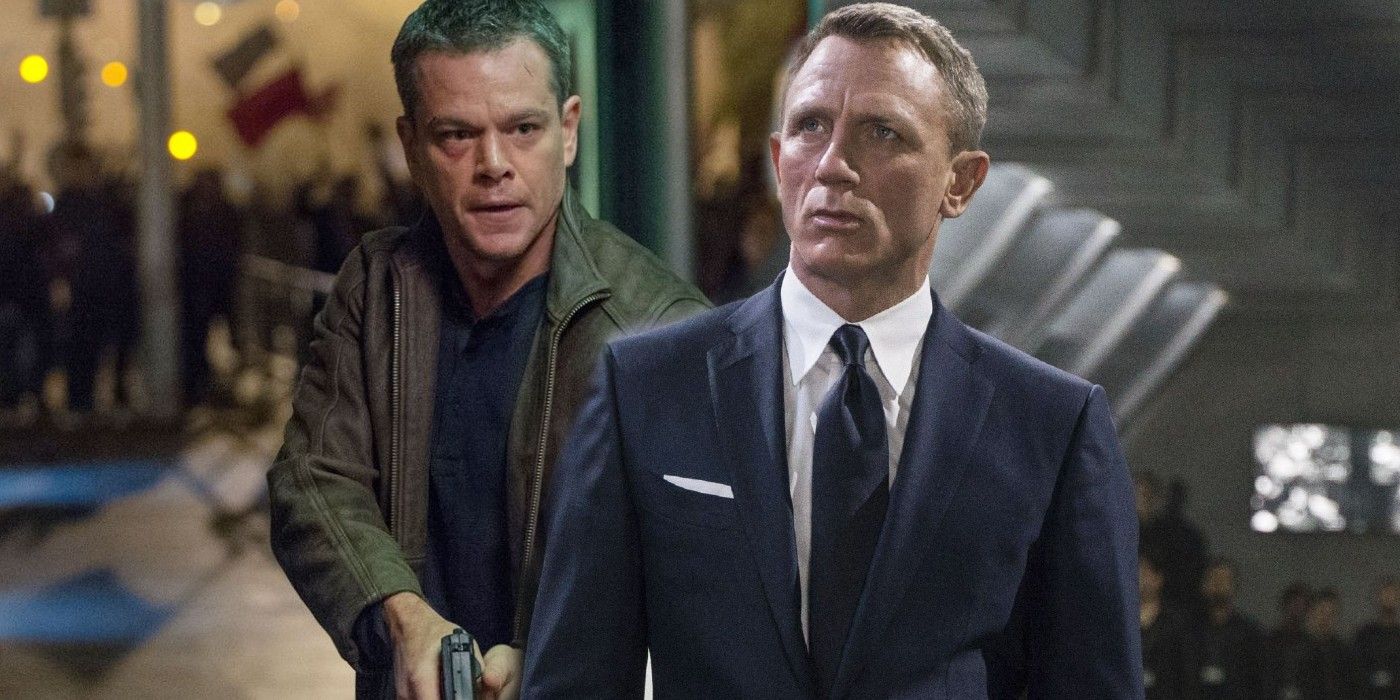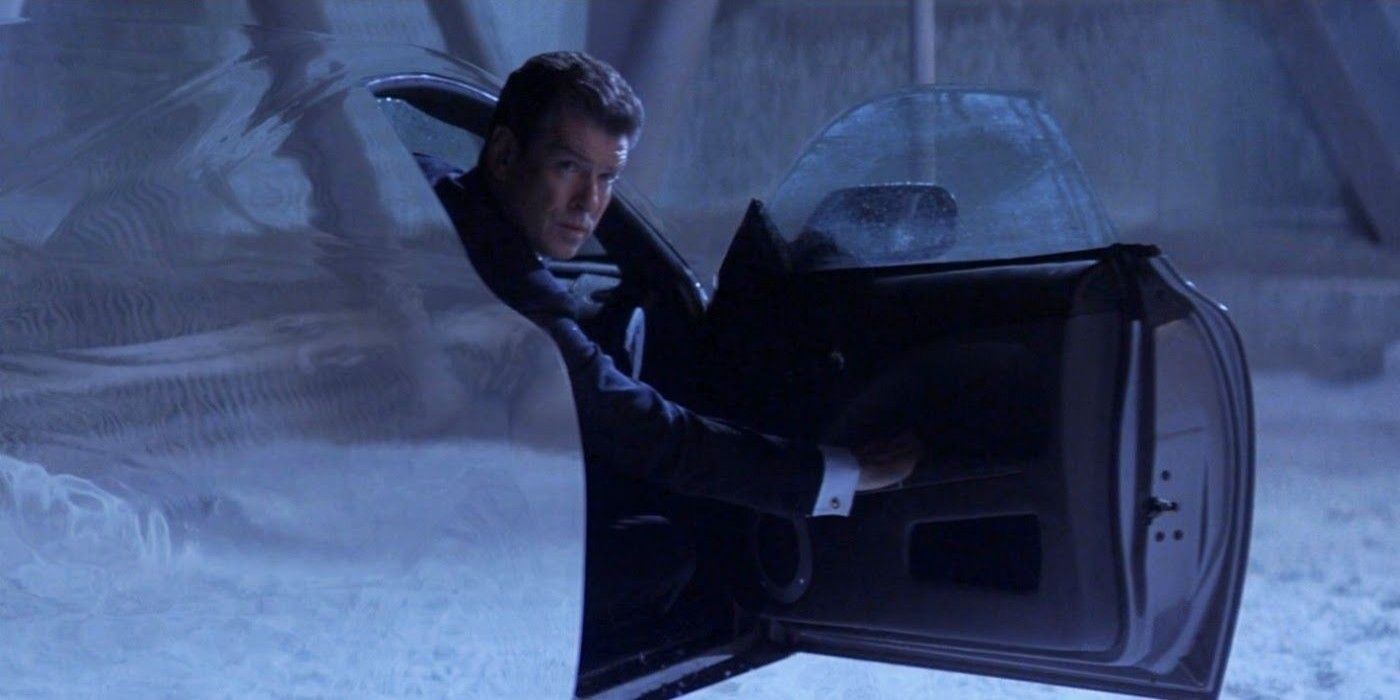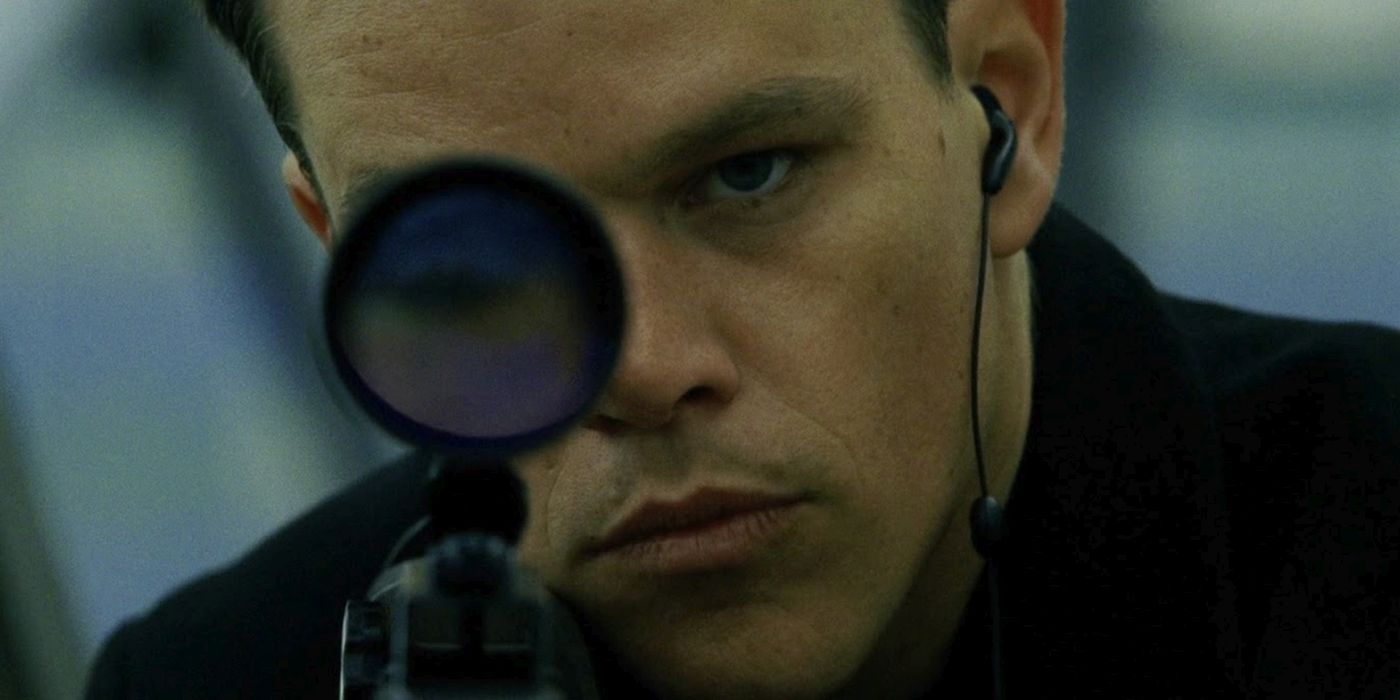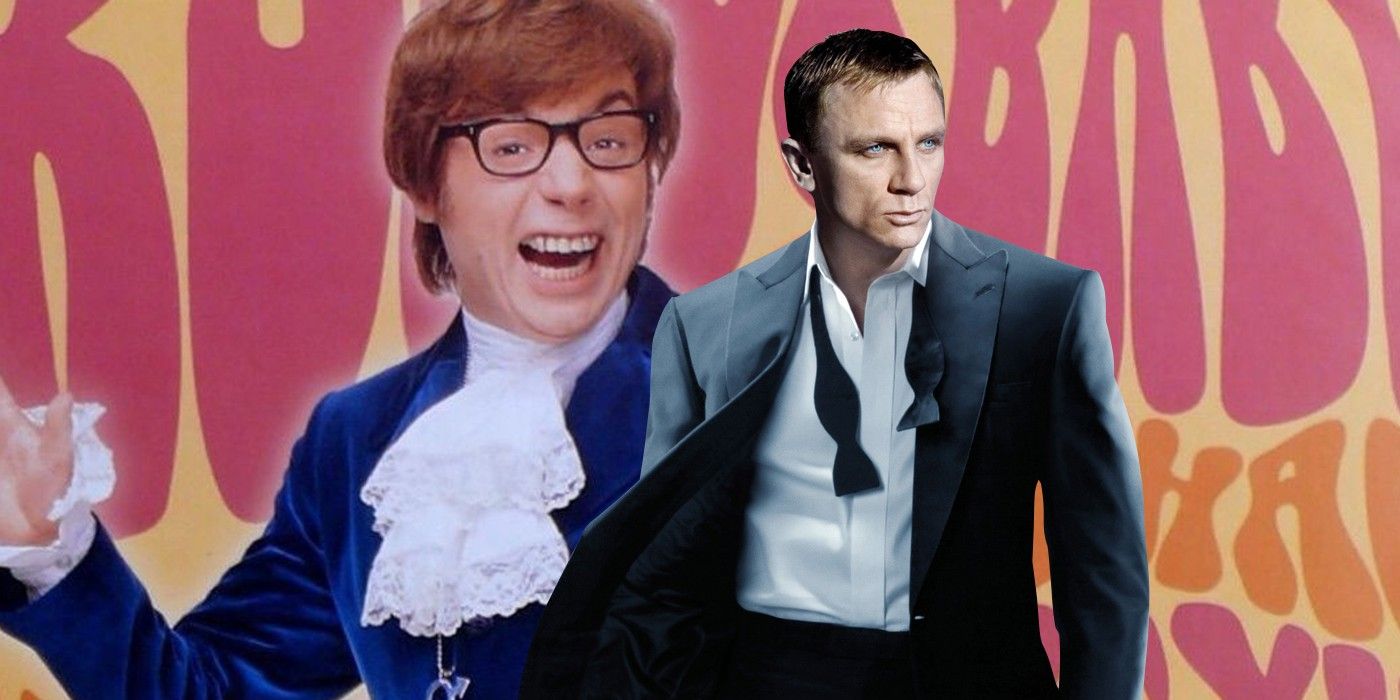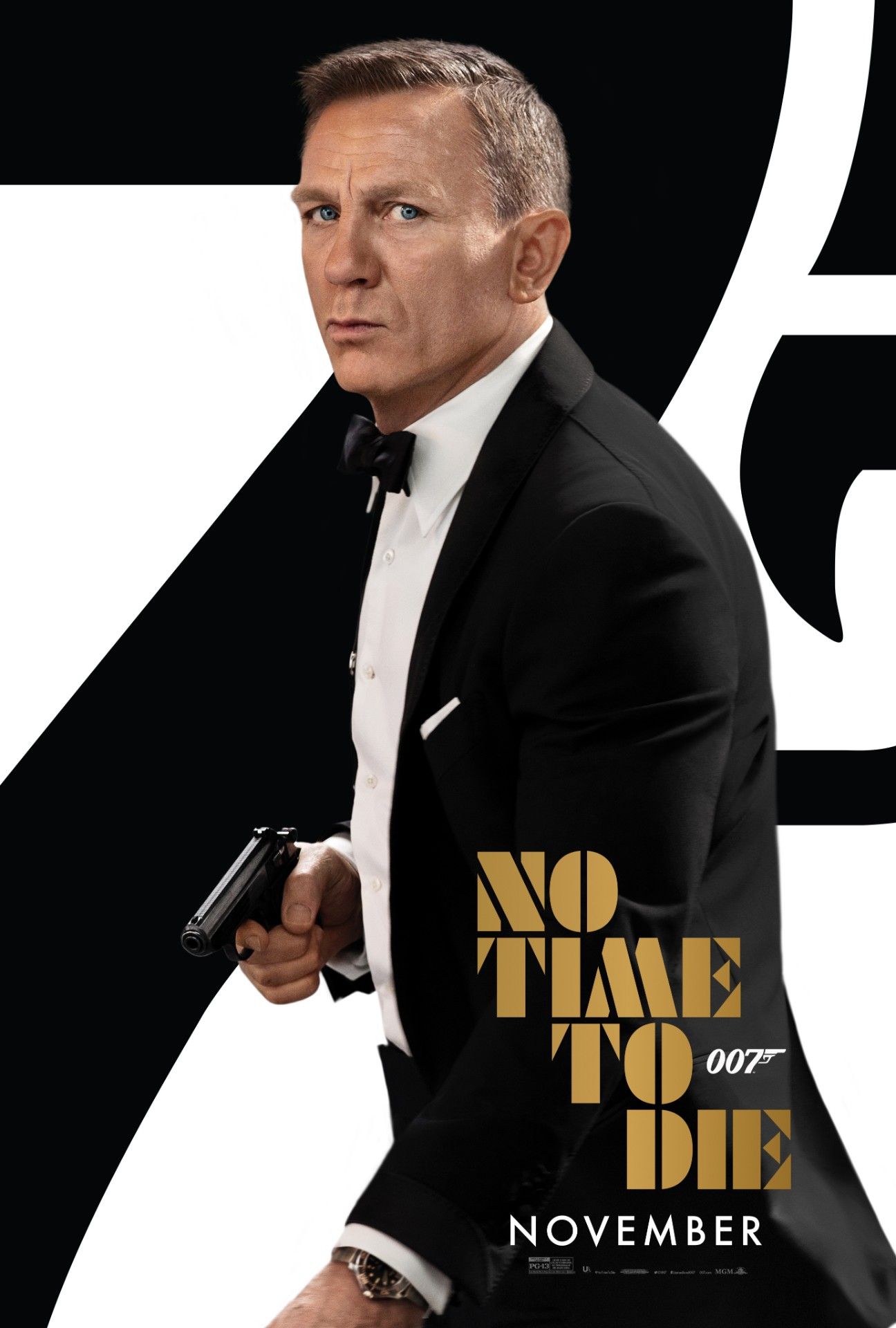Although the cinematic super-spies are usually box office rivals, amnesiac CIA operative Jason Bourne saved the James Bond franchise from embarrassing failure in the mid-2000s. He may be ready to retire from the part after the upcoming No Time To Die is released (and possibly make way for Tom Hardy), but as hard as it is to believe there was a time when Layer Cake star Daniel Craig's James Bond looked likely to fail. When the actor took over the role of James Bond way back in 2006, critics and fans alike were understandably skeptical about the prospect of the famous British super-spy’s movie franchise provoking more thrills than unintentional laughter in a post-9/11 cinematic landscape.
Not only was Pierce Brosnan’s campy final outing Die Another Day 007 a far cry from the Bond of Sean Connery’s influential early movies, the Austin Powers trilogy became a massive global success by affectionally spoofing the tropes and conventions that the spy franchise relied on. Mike Myers’ goofy comedies may have been borne out of a love for the James Bond series, but the title character’s cheesy pick-up lines and over-the-top nemeses made Bond villains and gadgets almost impossible to take seriously. The James Bond franchise needed a total stylistic overhaul to survive, and the source of its new life came from an unexpected place.
In the mid-2000s Matt Damon’s Jason Bourne series was on the cusp of overtaking Bond as the world’s favorite cinematic spy franchise. Introduced in 2002’s The Bourne Identity, Damon’s PTSD-afflicted super-spy was a far cry from even the darkest incarnation of Bond, Timothy Dalton’s younger 007. Where Bond had flirty quips and goofy disguises, Bourne had a brutal efficiency that allowed him to kill an assassin with a rolled-up newspaper and a shook, paranoid demeanor that betrayed his amnesia and PTSD. A more realistic spy for a more serious cinematic era, it looked like Bourne was going to render Bond irrelevant after the failure of Die Another Day — only for the spy to end up inspiring Daniel Craig’s transformed version of 007 and reviving the James Bond franchise itself.
James Bond Lost Relevancy With Pierce Brosnan's Movies
Although many fans of the franchise cite Pierce Brosnan’s Bond as one of the greatest cinematic incarnations of the super-spy, there’s no denying that critical consensus found the actor’s films in the role wanting. Through no fault of Brosnan’s, each James Bond movie that the actor starred in received progressively worse reviews than the last. In the space of less than a decade, Brosnan’s Bond progressed from the well-loved Goldeneye to the cringe-worthy Die Another Day, and everything from the franchise’s gadgets to their beloved creator Q earned less critical love and more ire as the Brosnan years wore on. It didn’t help that Brosnan’s movies leaned into the campier, more self-aware side of Bond after the harder-edged Timothy Dalton years just as the Austin Powers series gained popularity, with the second Powers outing The Spy Who Shagged Me earning almost as much as The World Is Not Enough upon release in 1999 (and getting better critical write-ups, too).
Jason Bourne Transformed The Spy Genre In The Early 2000s
Just as Bond’s relevance was waning, a less campy breed of the cinematic spy was gaining momentum at the box office. Jason Bourne began life as an amnesiac searching for his identity and evading shadowy government organizations in 2002’s Doug Liman hit The Bourne Identity, but it wasn’t until the thriller’s 2004 sequel that the character’s appeal and relevancy were set in stone. One of the first major blockbusters to address espionage after the beginning of America’s divisive 2003 invasion of Iraq, The Bourne Supremacy found Bloody Sunday director Paul Greengrass taking on the CIA in a movie that depicted Bourne as a victim of a clandestine spy training operation gone wrong. In an era when public trust in governmental and military organizations was waning after the infamous “weapons of mass destruction” debacle, the fact that Bourne’s tough spy spent more time escaping an overpowered government than fighting sillier villains like Max Zorin rang true for the moviegoing public. Meanwhile, in visual terms, the handheld shaky-cam aesthetic of Greengrass’ sequel became a popular trend among action directors the world over as the Bourne movies utilized this documentary-inspired style to add another layer of authenticity to proceedings.
How James Bond Was Influenced By The Bourne Series
When James Bond returned to cinema screens in 2006, the character had undergone more than a hair color change. Gone were the witty quips, replaced by Daniel Craigs’ gruff and anguished depiction of a man troubled by the violence inherent in his work and haunted by regret. The playful supervillain plots of the Brosnan era, influenced by Roger Moore’s goofier, funnier Bond outings, were replaced by realistic and genuinely unsettling villains like Mads Mikkelsen’s unforgettable Le Chiffre. More than anything, Bond had dropped his trademark ability to kill henchmen at the drop of a hat and offer a clever punchline while doing so. Now each casualty was a painful, drawn-out fight to the death - like the brutal bathroom beatdown that opened Casino Royale’s action - or a brutally quick and pointless murder, like Le Chiffre’s sudden, shocking demise.
James Bond Needed To Modernize In Order To Survive
To stay relevant after the cinematic changes that occurred post-9/11, the James Bond series needed a new persona and the Bourne franchise’s more grounded, realistic depiction of contemporary espionage was the perfect starting point for the series. When Casino Royale was released in 2006, the Bourne series was at the height of its power. Having shed the cornier aspects of Locked Down director Liman’s first movie in the series, the Bourne movies went from strength to strength until the critically adored third outing The Bourne Ultimatum finally revealed the truth behind the titular spy’s dark past.
However, the Bond movies did diverge for Bourne’s formula in one notable way, allowing them to hold onto an essential element of the franchise history. Although the Daniel Craig era James Bond movies borrowed heavily from both Damon’s hurting, human spy character and the kinetic camerawork on Greengrass’ movies, these new Bond thrillers still kept the franchise's villains firmly in the realm of international super-criminals, terrorists, and other enemies of the Crown. Where the Bourne series depicted the US state department as the ultimate evil behind its international intrigue, the Daniel Craig James Bond movies continued to use external forces as villains, and continued to depict the superiors handing orders down to 007 as mostly trustworthy patriots even in the post-9/11 era.

